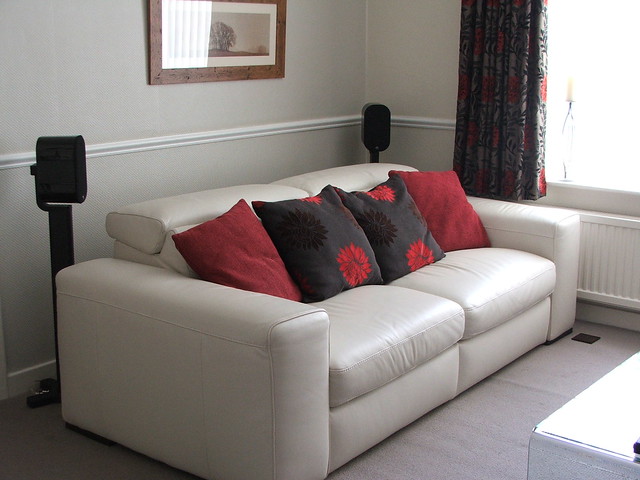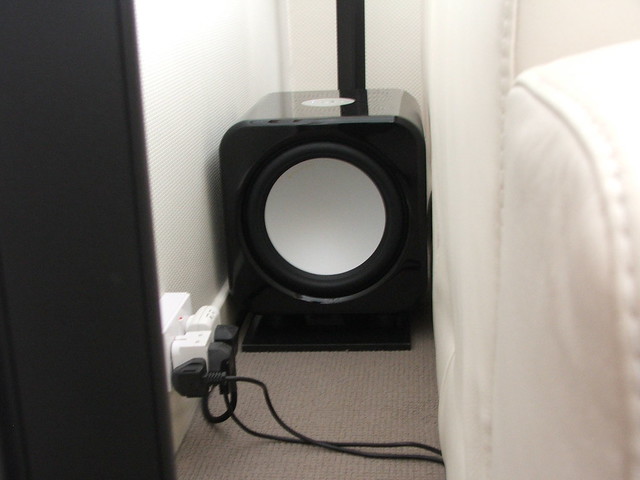ellisdj said:
Hi David - I certianly dont think its radical (we both know where this info has come from) - but the 80hz crossover is a number I feel is imprinted on the minds and people are scared to go above it as they dont know / understand the merits or probably even what is it is / does so they stick to that number to play safe - I have been there and done that so its not meant as an insult to anyone who does it
80Hz has always been adopted as a "standard" due to THX's adoption, and regardless of anyone's idea of THX's relevancy in today's market, this was something THX decided on to reduce a multitude of sins in varying rooms. The ideal crossover point for any given system in any given room depends on many factors. Smaller speaker systems like KEF's E305 or B&W's MT packages run fine at 80Hz, but gains can be had setting higher, generally between 100-150Hz as a guideline. Larger speakers are more capable, and don't need this higher crossover point, although performance between various speakers in any given frequency range vary, particularly midrange.
I'm just dubious of the intention of the source, as higher crossover points have been promoted for many years, but the aspect of mid detail was never mentioned - only the benefits of playing louder with more headroom. Making yourself stand out from the rest in what you provide, or how you do things seems to be the name of the game recently, regardless of whether there are clear benefits or not. A bit of spin can usually create those benefits.
Also, presenting the end user with a system that works extremely well in a purpose built room is fine as it will wow some people, but for a meaningful comparison with your own system, you have to make sure you're getting the best out of it - which the majority of people out there won't be. Much of the time, some attention paid to your own system can pay big dividends (not necessarily referring to yourself of course, as I presume you've done your homework).
I ran 100hz crossover for about 18 months up tp recently from a single sub so already knew that was better than 80hz in my room.
Ive been running 80Hz for years, varying it by 10Hz or so depending on the speaker package I'd been using at the time. Using the Ken Kreisel Quattros, I discovered their performance at the lower end of their frequency range was better than other similar style satellites, so I experimented with lowering the crossover to 70Hz and 60Hz. Both seem to work better than 80Hz for me, particularly 60Hz, but I think that is because I have a couple of peaks either side of a 50Hz null in my room, and using the smaller mid/bass drivers of my satellites seems to reduce those peaks, in stark comparison to the peaks produced by 4x 12" sub bass drivers. And that's the key - for higher crossovers to work well, EQ is a necessity, as the in-room peaks produced by subs need to be tamed to prevent them becoming a major issue. There are pros and cons to room EQ, and it isn't something I use myself, although I will experiment with DIRAC at some points no the near future, but I'll be EQing as small a frequency range as possible.
After hearing other systems working with higher crossovers 250hz for example - there is potential merit in it. I could also instantly hear where my system was lacking compared to these systems and its was the upper bass region - there is tons of detail here and from a sub this bass has a lot of impact and fullness whihc really adds to these movie effects - from my speakers it has never been there in this quantity or even quality.
I agree there is merit in it, but as I say, for it work properly, EQ is a necessity, as is a second subwoofer - that might be fine for some people, but for many, they're barely getting away with having 5.1 in their living room nowadays!
We all hear different speakers every now and again that sound different to our own, and there will always be slight differences, some you'll like, some you won't. What you heard was also being demonstrated in purpose built rooms, not the average living room. Regardless of how much this aspect is played down, it
does help.
Early av receivers I had were trying to setup my systems with 120 or 140hz crossovers but I always thought I have speakers than can do 50hz so 80 hz is best - that was just plain wrong, but I didnt know any different
It's not necessarily "plain wrong". Many people with larger speakers want to get as much benefit out of them as possible, so will use low crossover points. How good the speakers sound with these crossover points really depends on many things.
Speaker size is irrelevant its freq response in that region thats more important. Placing speakers in the best spot for imaging is rarely the best spot for bass and I have tried all manner of kit costing a lot!! room treatments etc and have never been able to get that bass in balance. A higher crossover does work for this - I know there are other issues but it does work.
I agree speaker size is irrelevant, as it is more down to the speaker's capabilities. That is one reason why I'm currently using my Quattros at 70Hz - they can do it, it sounds better, and it seems to have improved my soundstage in that it seems more detailed and three dimensional. There's a surprising amount of directional information above 50/60Hz, and it does play a big part in where we perceive sounds to come from (this is why two subs have to be used). This can easily be demonstrated with 'apparent point source' loudspeakers like KEF's Blade - they sound quite different to anything else, and other than quality, that can only be down to one thing - perceiving that all frequencies are coming from a single point at each speaker.
Bass is the hardest thing to get right. And for that reason, I agree that EQ is a good thing, but it isn't necessarily the best thing for more directional frequencies, which I'd rather look into room treatment for.



